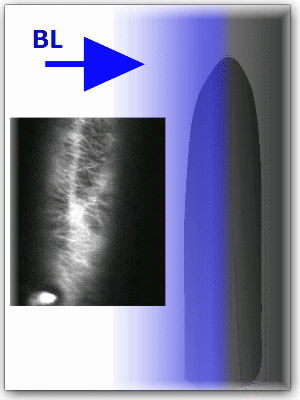Microtubules respond to light, thus, plants grow to the light (phototropism)
Nick P, Bergfeld R, Schäfer E, Schopfer P (1990) Unilateral reorientation of microtubules at the outer epidermal wall during photo- and gravitropic curvature of maize coleoptiles and sunflower hypocotyls. Planta 181, 162-168 (133 quotations, state 17.02.2022) - pdf
What is it about? Microtubules reorient in response to auxin, light and gravity. This was shown by the at that time still novel technique of immunofluorescence. The microtubule reorientation can explain,how plants adjust growth with respect to light and gravity (for light this is called phototropism, gravitropism for gravity as stimulus. A model is proposed, whereby the stimulus (blue light, gravity) causes a transverse shift of the plant hormone auxin. In the auxin-depleted flank, microtubules reorient from transverse to longitudinal, in the auxin-rich flank they remain transverse. The microtubules control the deposition of cellulose fibers in the growing cell wall. Therefore, cellulose will be longitudinally oriented in the lighted (phototropism) or upper (gravitropism) flank of the growing shoot, such that cell elongation becomes arrested. In the shaded (phototropism) or lower (gravitropism) flank cellulose is further deposited in transverse orientation supporting cell elongation. Since cells in the one flank stop to elongate, but continue elongation in the opposite flank, the shoot will curve towards the light (in case of phototropism) or upwards (in case of gravitropism).

